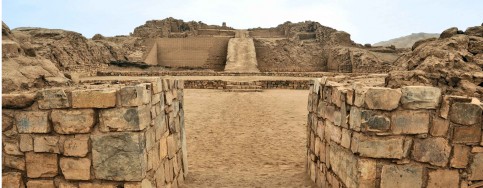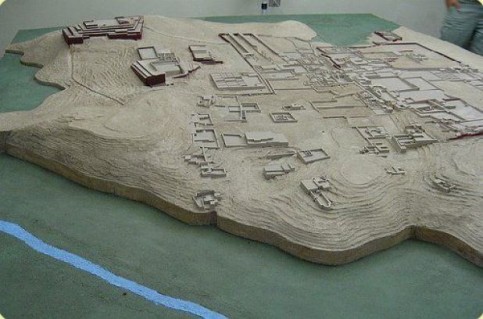The Pyramids of Pachacamac; an ancient Masterpiece of construction. Pachacamac is a Pre-Inca archaeological site located roughly 40 km southeast of Lima, Peru. Archaeologists have discovered over 15 Pyramids in this huge ancient complex.

According to researchers, the main city and administrative center were built by the Wari culture somewhere between 600-800 AD. Even though the Wari empire declined, Pachacamac grew in importance as a religious center in ancient times and most of the common buildings and temples date between 800 and 1450 AD. Besides pyramids, the site had a cemetery and multicolored fresco of fish from the Early Intermediate period (c. 200-600 CE). According to archaeologist Pachacamac was the most important pilgrimage center in ancient Peru, and at its glorious days the place received hundreds of people from all over Peru. “Pachacamac,” is a Quechua word for ‘world’ (pacha) and ‘animate’ (camac), and in total means “The one who animates the world.”

The Huari culture, around 600-800 CE constructed the city and developed it, probably using it as an administrative center. Archaeologists have discovered a number of Huari-influenced designs which appear on the structures and on the ceramics and textiles found in the cemeteries of this period. After the collapse of the Huari empire, Pachacamac continued to grow as a religious center. The majority of the common architecture and temples were built during this stage (c. 800-1450 CE).
The people of Pachacamac worshiped Pacha Kamaq, in translation The earth Maker, he was considered the creator god by the people who lived in this part of Peru before the Inca conquest. The Inca included him into their deities but considered him a lesser rival of Viracocha, their creator god.
All cultures that were present at some point brought offerings to the holy ground to worship their gods. Numerous ancient offerings found by archaeologists have given more insight and details into the history of this ancient monumental complex thanks to different items found such as, textiles, decorated ceramics, wood carvings, ocean shells, animals and even sacrificed women and children.
Between 1940 and 1941, Julio C. Tello began excavations at the site, focusing on the temple of the sun, the Temple of Urpi, the Plaza, and the temple of Mamacona. He concluded that the Mamacona temple was a temple for women where only the most beautiful women were raised and given education inside the temple to become nuns or wives.
Archaeologists have found thousands of mummies and numerous unique artifacts hidden for centuries beneath the arid Peruvian soil. Pachacamac will continue to be an important archaeological site in the future where archaeologists continue to excavate hoping to find out more information about this ancient complex and the variety of cultures that called it home.
Less than a hundred years after the Inca took over Pachacamac, the great monumental center met its demise. The Spanish conquistador Francisco Pizarro arrived in Peru in 1532 and took the Inca ruler Atahualpa prisoner. Pizarro soon heard about the riches at Pachacamac and in 1533 sent an expedition led by his brother, Hernando, to sack the site and the surrounding area. The Spanish conquerors made off with large amounts of silver and gold and destroyed the idol that served as oracle for the pilgrimage center. Pachacamac never recovered its former importance and soon faded away. —Kathy B. Maher
- Source:
- http://ngm.nationalgeographic.com/ngm
- http://www.anywhereperu.com/

You must be logged in to post a comment Login